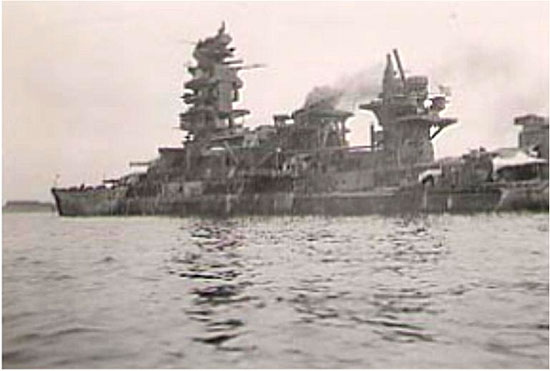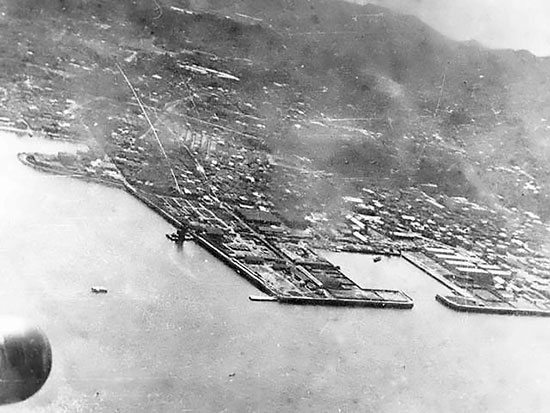Willow History

It is sometimes said that the Department of War never lost one, and the Department of Defense never won a conflict. There is some room to quibble, since at the time we considered the first Gulf War to be a victory, since it liberated Kuwait from Saddam.
All I can say is that the last complete victory, ambiguous as it is, was fueled with whiskey and sustained by nicotine. I used to talk to our pal, Rear Admiral Mac Showers about that at the Willow Bar, though both he and the bar are gone now, just as most of the brands of that age are gone now; I have not lit up a Lucky in some years, and you cannot find Three Feathers whiskey anywhere.
Ships have the same problem. Regardless of how expensive or grand, they are nothing more than holes in the water that the owner, private or government, attempts to fill with money. Mac was a wonderful guy to talk to- his memory of the war years (and all the rest of it) was crystal clear, and he loved having a knowledgeable audience that could ask the right questions. Willow was the perfect place to hear about history.
Mac’s team at Station HYPO tracked all the call-signs of the Japanese Fleet, and when Mac moved over to the Joint Intelligence Center- Pacific Ocean Area (JIC-POA) he reported the general orders of battle in the weekly Fleet Intelligence Bulletin.
The Flagship of the Imperial Fleet, IJN Nagato, is a case in point. After Pearl Harbor, she saw action only once, during the battle of Leyte Gulf. She was a victim to a colossal error is strategy, which is the lifeblood of the successful war.
The Americans had adapted to the newest special weapon, the aircraft carrier, and only operated their battleships under the cover of aircraft. The Japanese never crystallized their doctrine in quite the same manner, failing in the integration of the combined-arms concept. The IJN leadership kept their major units in reserve for the decisive battle, which as it turned out, happened while they were waiting.
At the outbreak of the American phase of World War II, Nagato was under the command of Captain Yano Hideo, and with her sister Mutsu formed Battle Division 1. Nagato was the flagship of the Combined Fleet, flying the flag of Admiral Yamamoto. On 2 December 1941, Nagato’s radio-room transmitted the signal “Niitaka yama nobore 1208,” which translates from the Japanese as an admonition to “Climb Mount Niitaka on 12/08.”
Mount Niitaka was the highest mountain in the Empire of the Sun, over 13,000 feet in height, and located on the island of Formosa, which we now call Taiwan.
That signal committed the Carrier Strike Force to the attack on Pearl Harbor, and Japan to expand its war in China to the rest of what they considered the Great East Asia Co-Prosperity Sphere. The glory was swift and fleeting. Admiral Yamamoto transferred his flag from Nagato in February of 1942, breaking it from the awesome new battleship Yamato’s mast on the fifteenth.
Nagato’s time as the most special weapon in the inventory had passed. Yamato and her class were stupendous, the first Japanese warships designed in the post-Treaty era. The limitations that preserved the primacy of her class had been established in Washington in 1922, and then extended in London in 1930. The international community hoped to put off another naval arms race until after 1937, at the earliest.
Yet another desperate diplomatic effort was scheduled for 1936, again in London. But under sanction, the Japanese withdrew from the pact. They commenced work on Yamato in 1934, and preliminary designs were accepted on March of 1935. After modifications, the design for a 68,000 ton ship mounting 18.1-Inch guns was accepted in March 1937.
Constructed under intense secrecy at the Kure Naval Dockyards, Yamato was commissioned two weeks after the attack on Pearl Harbor.
Nagato accompanied the First Fleet to the battle of Midway, but was consigned to the second rank. She saw no action at Midway, which turned the tide of the war, and returned carrying the survivors of the aircraft carrier Kaga to Japan.
As a part of the strategic reserve striking force, she proceeded to the anchorage at Truk in 1943, under the command of Captain Hayakawa Mikio. Upon the evacuation of that strategic base in February 1944, she steamed to Lingga, near the occupied British Crown Colony of Singapore.

(The Battle Off Samar. Map courtesy USN).
Beginning in June 1944, she took part in the series of operations against the Allies that started in the Marianas, and continued in the Philippine Sea, and Leyte Gulf. Nagato passed through the San Bernardino Strait with other units of the Central Force, and engaged escort carriers and destroyers of the Task Group 77.4.3, the famous desperate fight of Task Group Taffy-3.
Under continuous air attack from the Americans, the Japanese fleet withdrew to the north, arriving at Yokosuka for refit and replenishment. The course of the war had changed. Lack of fuel and materials meant that Nagato could not be brought back into service.
In December 1944, the battleship was tied with heavy lines to the Koumi pier, next to the gigantic Yamato dry-dock where the American Carriers are now accommodated. Worse, she was “cold iron,” with no boilers on the line. Lack of fuel meant that she could not get underway for evasive action. Accordingly, the ship was painted in an elaborate camouflage and her turrets were covered with wooden scaffolding.
The New Year of 1945 was a dismal one. The Imperial Navy was shuffling personnel to match its remaining ships. Nagato was assigned as a coastal defense ship, isolated in Yokosuka, with the rest of the fleet in the Inland Sea.
In April, Rear Admiral Otsuka Miki arrived to assume command. Concealment operations continued, though increasingly it was apparent that battleships were hard things to hide. In late June the word came that Okinawa had fallen, and the home islands were the last objective of the Americans.
Nagato’s secondary and anti-aircraft guns were moved ashore, to be placed strategically in the low green hills around the harbor. Tunnels were dug to provide shelter for the 1,000 crewmen who remained with the ship.
On the first of July, the fast carriers and supporting ships of Task Force 38 moved north from Leyte Gulf, and took up positions to launch aircraft against the Home Islands in July.
One of the prime targets of the combined American-British Fleet was Nagato. Admiral Bill Halsey viewed her as the very symbol of the perfidy of Pearl Harbor, and he was determined to sink her, in port if necessary, just as the Arizona had been sank at the foot of Battleship Row.

(Wartime Yokosuka Naval Base. Photo USAAC).
Nagato was tied up with her bow facing northwest at nearly right angles to the inner harbor entrance, starboard side to the pier. The huge yard crane I remember from my days on the waterfront is evident in the ancient reconnaissance pictures.
Inclement weather conditions forced cancellation of flight ops on the 17th, but the next day the weather improved. The carriers Essex, Randolph, Yorktown, Shangri-la and Belleau Wood launched two hundred and fifty airplanes against Yokosuka.
The flight to the target was uneventful, with no resistance. That changed at Yokosuka, with fierce anti-craft fire erupting from the hills around the harbor, and from the ships themselves. The attack went on for around twenty minutes. Nagato took a 500LB bomb in the bridge, coming in at an angle from the port bow, slanting down.
The blast stopped a bridge clock at 1552, and shattered the pilothouse. Commanding Officer Otsuka, XO Higuchi and thirteen others were killed where they stood.
Months later, when Ed Gilfillen arrived, the compartment was still a mess.
But I am going to have to get to that tomorrow. It amazes me that Uncle Jim had brief custody of the very radio tubes Nagato’s radiomen used to direct the attack on Pearl Harbor. I wonder if the Wireless Museum people know that?
Copyright 2015 Vic Socotra
www.vicsocotra.com
Twitter: @jayare303
